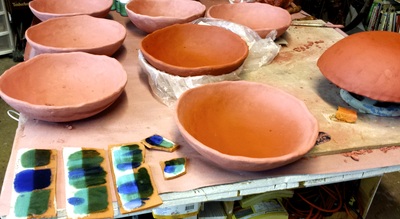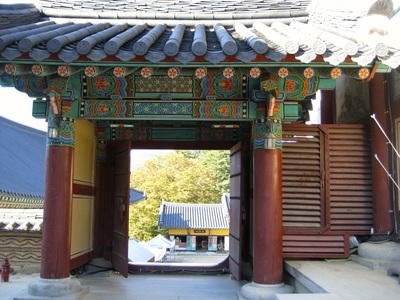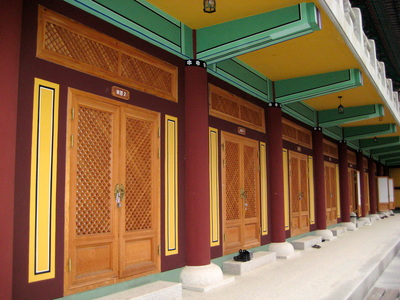The Resonance of Emptiness

Haein Art Biennale, South Korea
The Haeinsa Temple, one of Korea’s three largest Buddhist monasteries and a UNESCO World Heritage Site was the site for the 2013 Haein Art Biennale. Created to provide a permanent link between the Haeinsa Temple and Art, the Biennale was planned with a long term vision of sustainability for the temple and surrounding Gaya-San National Park.
The Resonance of Emptiness investigates the concept of emptiness and related ideas of impermanence and interconnectedness. It was installed in a meditative space where people sit to rest after climbing up the mountain to the temple entrance. People were invited to reflect on the concept of emptiness while transferring materials from one bowl to another. This ritual of filling and emptying is meant to create a deeper understanding and dialogue between inner and outer, matter and spirit, interconnectedness and impermanence.
Nine international artists and 21 Korean artists were invited to participate in the 2013 Haein Art Biennale. Works were installed at various sites on the incredibly beautiful Haeinsa temple grounds. This year’s theme was “Maum” which means mind, soul and spirit.
The international artists stayed at the temple, a serene and exquisitely beautiful place. We ate with the monks and had the opportunity to observe some of their daily prayer rituals, one of which was at 3:00 in the morning.
Learn more about the Haein Art Project
Read about the project in the Korea Herald
The Haeinsa Temple, one of Korea’s three largest Buddhist monasteries and a UNESCO World Heritage Site was the site for the 2013 Haein Art Biennale. Created to provide a permanent link between the Haeinsa Temple and Art, the Biennale was planned with a long term vision of sustainability for the temple and surrounding Gaya-San National Park.
The Resonance of Emptiness investigates the concept of emptiness and related ideas of impermanence and interconnectedness. It was installed in a meditative space where people sit to rest after climbing up the mountain to the temple entrance. People were invited to reflect on the concept of emptiness while transferring materials from one bowl to another. This ritual of filling and emptying is meant to create a deeper understanding and dialogue between inner and outer, matter and spirit, interconnectedness and impermanence.
Nine international artists and 21 Korean artists were invited to participate in the 2013 Haein Art Biennale. Works were installed at various sites on the incredibly beautiful Haeinsa temple grounds. This year’s theme was “Maum” which means mind, soul and spirit.
The international artists stayed at the temple, a serene and exquisitely beautiful place. We ate with the monks and had the opportunity to observe some of their daily prayer rituals, one of which was at 3:00 in the morning.
Learn more about the Haein Art Project
Read about the project in the Korea Herald





